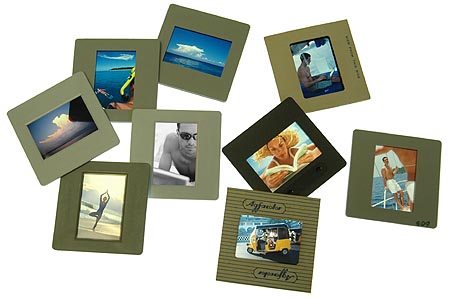Just trying to educate myself as I'm a complete noob to traditional film.
My late grandfather had an old Zenit camera I now have and didn't have any idea if there was any film it it.
After taking what seemed a lot of shots, the camera wouldn't cock anymore so I guessed there was film in it. Rewound it, and then I though I'd finished rewinding it as it became a lot easier. Turns out the film broke inside the camera which I found out when I opened the back to take it out. So it's in two pieces and I guess the chances are the fill still on the spool will be blown as it had some light on it for a fraction of a second.
Not having a suitable dark room, I took the whole camera to Jessops so they could take it out. A few minutes later, they came back with two rolls - one of the film rewound in the film cartridge, another loose piece in a light-protecting film case. Not knowing if any of it's salvageable, I asked them to have it developped - there may be some photos my grandfather took and of course they have an emotional value.
They asked whether I wanted a 1 hour processing, or 1 day processing and I went for the one day.
Now, they've just phoned me saying they can't develop it because it's "slide film". And they'll need a week to develop it - which is fine by me
But it got me thinking:
- I thought all 35mm film was of similar type - the roll appeared to be some standard Fuji ASA100 So why would this be any different?
So why would this be any different?
- What type of film development services do Jessops offer that differ from what I gave them
I might just ring them back and ask for a clarification. I'm not blaming them at all, just confused.
All you darkroom experts out there, care to shed any light on it (no pun intended )
)
Thanks.
My late grandfather had an old Zenit camera I now have and didn't have any idea if there was any film it it.
After taking what seemed a lot of shots, the camera wouldn't cock anymore so I guessed there was film in it. Rewound it, and then I though I'd finished rewinding it as it became a lot easier. Turns out the film broke inside the camera which I found out when I opened the back to take it out. So it's in two pieces and I guess the chances are the fill still on the spool will be blown as it had some light on it for a fraction of a second.
Not having a suitable dark room, I took the whole camera to Jessops so they could take it out. A few minutes later, they came back with two rolls - one of the film rewound in the film cartridge, another loose piece in a light-protecting film case. Not knowing if any of it's salvageable, I asked them to have it developped - there may be some photos my grandfather took and of course they have an emotional value.
They asked whether I wanted a 1 hour processing, or 1 day processing and I went for the one day.
Now, they've just phoned me saying they can't develop it because it's "slide film". And they'll need a week to develop it - which is fine by me
But it got me thinking:
- I thought all 35mm film was of similar type - the roll appeared to be some standard Fuji ASA100
 So why would this be any different?
So why would this be any different?- What type of film development services do Jessops offer that differ from what I gave them

I might just ring them back and ask for a clarification. I'm not blaming them at all, just confused.
All you darkroom experts out there, care to shed any light on it (no pun intended
Thanks.
Last edited:

